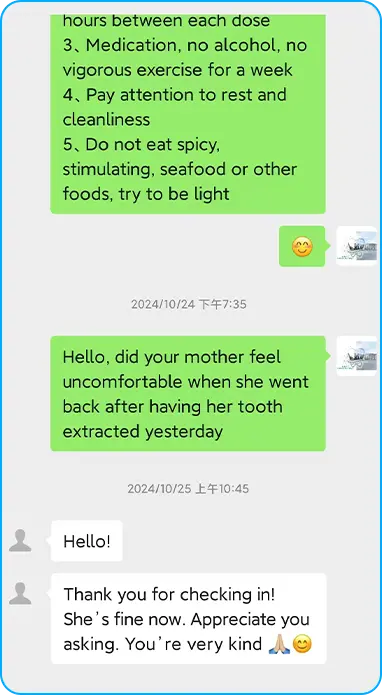Below we will introduce the expert version of the order in which baby teeth erupt, as well as brushing precautions, in order to say goodbye to the misinformation from "hearing from friends." This will take approximately two to three minutes of your time to browse. Thank you for reading.
The above is all the content of "90% of people do not brush their teeth correctly, it doesn't matter, I will teach you!" Thank you for reading. If you have any other questions, please feel free to consult our professional doctors.
1. Sequence of eruption of children's teeth and individual differences.
A person will have two types of teeth throughout their life: deciduous teeth and permanent teeth. Normal deciduous teeth consist of 20 teeth, while permanent teeth consist of 28-32 teeth, except for cases of congenital absence or supernumerary teeth.
Chronological order.
Normally, babies will start teething their first primary teeth around the 6th to 10th month after birth. The first teeth typically emerge symmetrically from the lower front teeth, followed by the two lateral incisors, canines, and molars. Usually, by around 2.5 to 3 years old, all 20 primary teeth will have erupted.
Around the age of 6, permanent teeth will gradually start to grow out. Some children first grow their first molar teeth (first permanent molars), while others start with the front teeth of the lower jaw to replace the baby teeth. This is all normal. The process of tooth replacement will last until about 12-14 years old, when all 28 teeth will be in place.
PS: The first permanent molars are commonly referred to as "six-year molars" because they emerge around the age of 6. There is one on each side of the upper and lower jaws, and they are also the first permanent teeth that babies grow.
▎Individual Differences
The time for a baby to start teething usually begins from the 6th month after birth until all 20 primary teeth are erupted by 2.5 years old. However, some babies start teething as early as 4 months old, while others may not have their first tooth appear until 13 months old.
These differences may be related to genetic factors, gender, birth weight, and environmental factors such as temperature, nutrition, and disease.
Generally, female babies develop teeth earlier than male babies, and babies with higher birth weights tend to start teething earlier. Children with higher height and weight tend to develop teeth earlier than those with poor nutrition and lower height and weight.
Children in colder regions tend to have later tooth eruption compared to those in warmer regions.
These differences in teething time are normal and acceptable. However, if a baby has not yet erupted their first tooth by the age of 1 year old, it is considered delayed eruption and needs to be investigated for possible causes, including rickets, hypothyroidism, and nutritional deficiencies.
Common accompanying phenomena during teething include increased drooling
▎Drooling.
When teeth erupt, they stimulate the trigeminal nerve, which leads to an increase in saliva secretion. However, since young children do not yet have the habit of swallowing large amounts of saliva and their mouths are shallow, saliva often flows out of their mouths, causing what is called "physiological drooling".
Therefore, it is normal for babies to drool during teething, and there is no need to worry. This phenomenon will naturally disappear as the child grows older.
It should be noted that saliva has a certain stimulating effect on the skin, so parents need to use a soft cloth to wipe away the saliva in a timely manner to prevent infection.
▎Gum itchiness
Babies may feel some swelling, pain, and even skin cracking on the gums where the little teeth are about to emerge. This may lead to symptoms such as crying, irritability, and restlessness.
Parents can buy some teething toys or chew sticks for the baby to bite on, which can not only divert their attention and relieve discomfort, but also help train their chewing ability
▎During teething, children may feel uncomfortable and refuse to eat food that requires chewing or is warm.
If it is confirmed that the child is not sick or refusing to eat due to other factors, but because of discomfort caused by teething, do not force them to eat. Instead, prepare some nutritious and soft foods that are cold to help soothe their discomfort.
3. Care during teething and introduction of complementary foods.
Did you know that the way to clean a baby's mouth varies according to their age? This is especially important when the baby's first teeth start to emerge.
▎Introduction of complementary feeding during the weaning period.
When a baby's first teeth emerge, they move away from the group of toothless babies. At this stage, babies love to put anything they can get their hands on in their mouths to chew on. Moms can try to give babies some semi-solid foods, such as mashed potatoes, egg yolk puree, oatmeal porridge, etc., to let babies experience the transition from liquid to paste-like food. Slightly thickened complementary foods can make babies aware that their food is beginning to change, laying the foundation for them to exercise their teeth for chewing solid foods in the future.

▎After the age of 3, food should not be too finely processed.
Parents often notice that their child's previously straight baby teeth become crooked after the permanent teeth come in. This is because the permanent teeth are much larger than the baby teeth, and if the child's jawbone does not receive sufficient stimulation between ages 3-5, the jawbone may not develop enough space for the teeth, causing them to grow in crooked.
Chewing food can promote the growth and development of baby teeth roots and facilitate natural absorption and shedding. Overly processed foods can lead to decreased chewing function in children's teeth and poor jawbone development. Therefore, parents should encourage their children to eat more chewy foods such as celery, peanuts, apples, sugarcane, and other fibrous fruits and vegetables.























